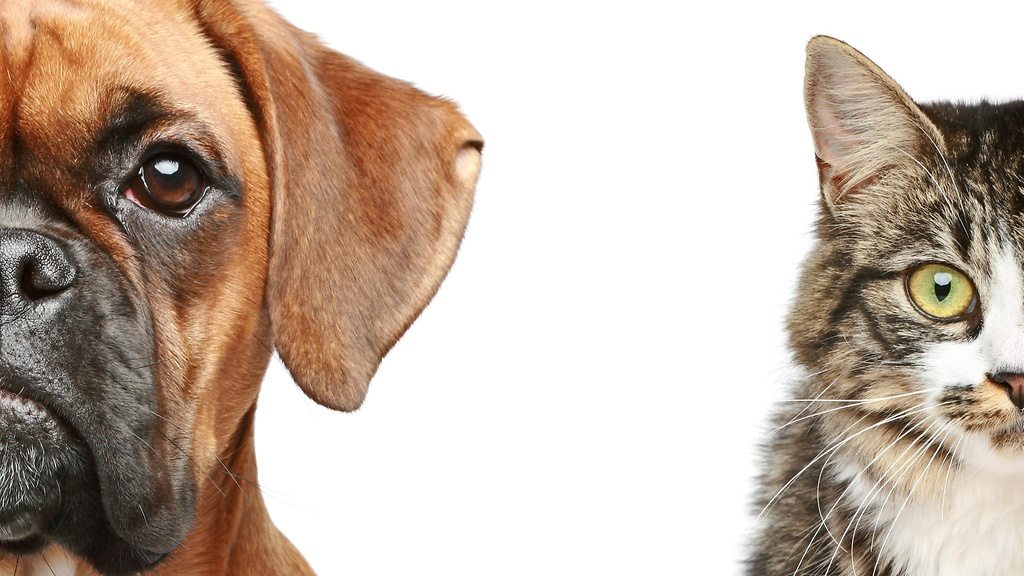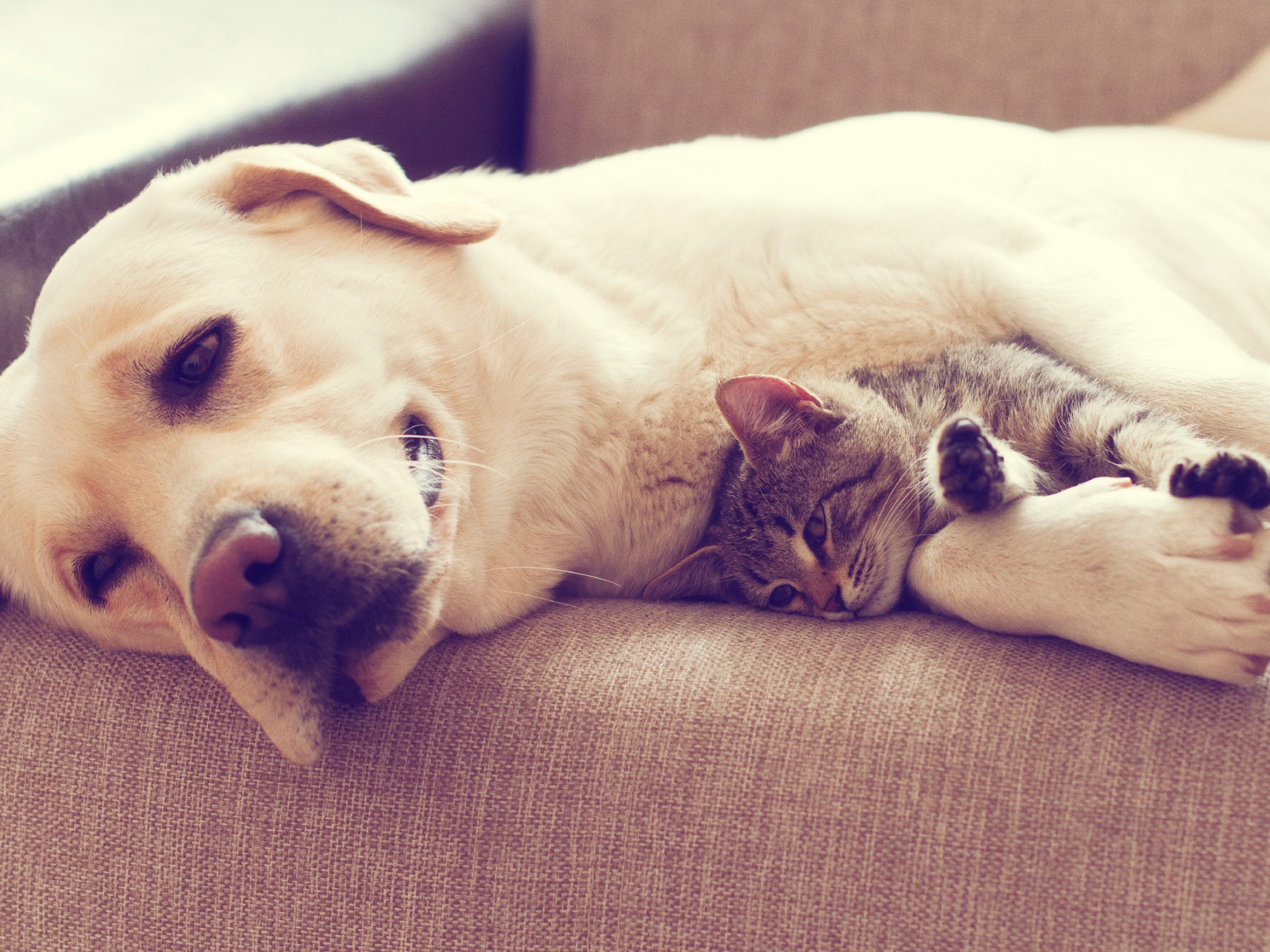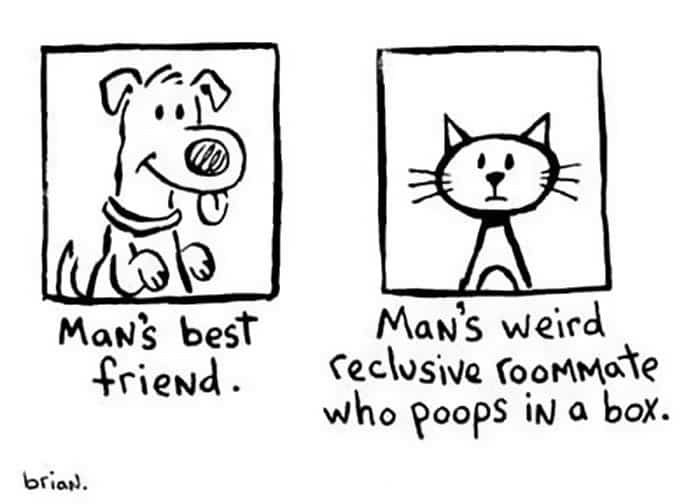The Debates’ Settled People- Dogs are officially, the Smartest
Throughout the ages, dogs and cats have had nothing short of a…. shall we say “complicated” relationship, as they battle it out for the status of man’s all-time favorite furry little companion. Over the centuries, there have been a few select rivalries that have, over time, escalated to the status of epic. Who hasn’t heard of the Hatfields Vs. The McCoys, for instance? The good guys vs. all things evil? No matter how intensely all other rivalries may rage, it seems that none shall ever achieve the legendary status of Dogs vs. Cats.
Okay, let’s cut the chase. Half you guys out there will like this and the other half… well honestly, I don’t know.
As someone who spends most hours in a day searching, obsessing, and talking in squeaky weird voices to pictures/videos of doggos on the internet, I ain’t really a huge fan of cats (well, honestly, I believe they are minions of Lucifer), and this is hands down, THE best news I’ve heard all day- An international team of scientists says its research strongly suggests that dogs are smarter than cats.
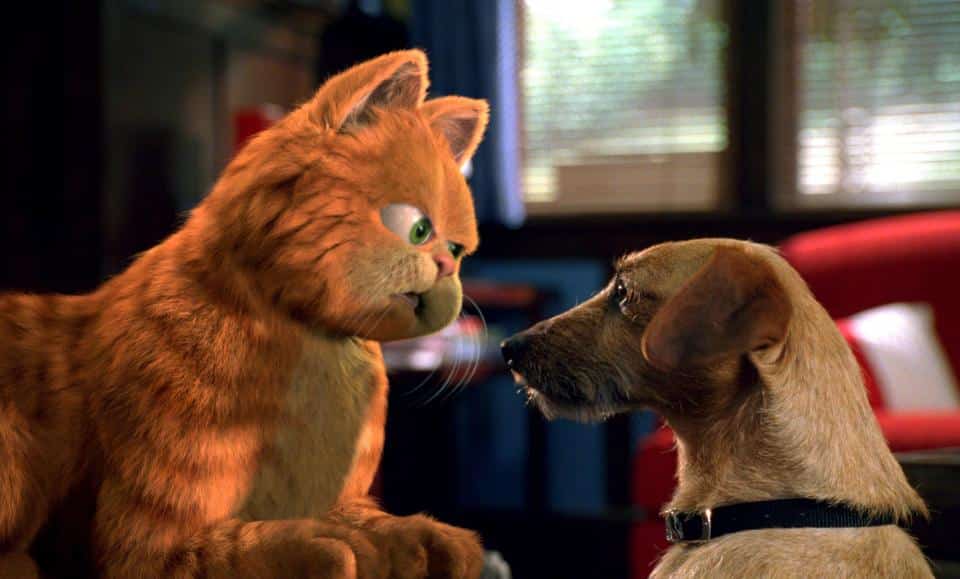
Yep!
Turns out, all our favorite cartoons ever did, was lie to our faces. CatDog, The Jungle Book, Garfield, Animaniacs, and Futuramaall portray cats as smugly intellectuals, and typically smarter than dogs. This extends to stereotypes of owners as well: cat people are bookish, intellectual, and introverted, while dog owners are jocks. Well, suck it, cat people: dogs are the smart ones.
That is, if cortical neuron count is a good indicator of intelligence. But let’s not complicate things with a measured approach to this scientific news.
Dogs rule, cats drool (if your cat is actually drooling, go see a vet). Also, just asking, is it too early to start singing “smelly cat” clad in my Disney Dogs pajama?
Okay, no more distractions.

Study leader Prof Suzana Herculano-Houzel of Vanderbilt University in the US admitted she was a ‘dog person’ but insisted that didn’t impact her findings. Be not Wary, for, team of researchers from six different universities in the U.S., Brazil, Denmark, and South Africa also contributed to the research.
“You take the brain and turn it into a soup,” Herculano-Houzel says matter-of-factly, as the first step to finding these neurons. From there, she said, you end up with a number of suspended nuclei from neuron cells that allow the researchers to estimate the number of neurons present. “Neurons are the basic information processing units,” she said. “The more units you find in the brain, the more cognitively capable the animal is.”
To make her results-yielding “brain soup,” as she calls it, the research team used only a part of the brain called the cerebral cortex, the crinkly outer layer that sits on top of the brain’s other pieces. While different parts of the brain process outside stimuli like site and touch, the cerebral cortex puts these stimuli together to drive decision-making and problem-solving, among other functions.
“I believe the absolute number of neurons an animal has, especially in the cerebral cortex, determines the richness of their internal mental state and their ability to predict what is about to happen in their environment based on past experience,” Herculano-Houzel explained.
“I’m 100 percent a dog person,” she added, “but, with that disclaimer, our findings mean to me that dogs have the biological capability of doing much more complex and flexible things with their lives than cats can. At the least, we now have some biology that people can factor into their discussions about who’s smarter, cats or dogs.”
According to the research paper, bigger animals didn’t necessarily have more neurons. Bears, for instance, have brains 10 times the size of cat brains, yet approximately the same number of neurons. The bear brain has 10 times as many non-neuron cells than the cat does, though.
Another surprising finding was that the carnivores don’t tend to have more neurons than herbivores. The researchers had presumed that an animal that stalks and takes down their prey would have to outsmart that animal. But when compared to similar research on herbivores, both predators and the preyed-upon appeared to share a similar number of neurons.
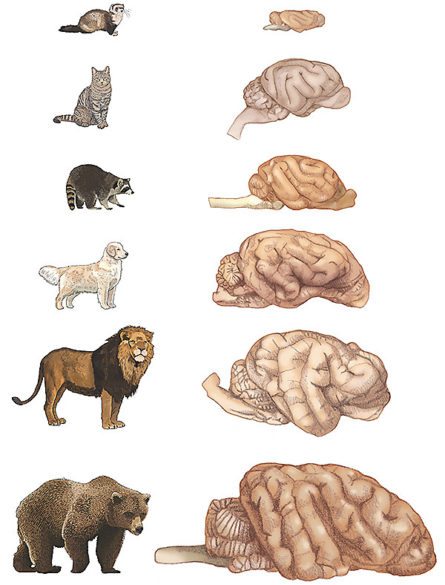
To get an idea of how many neurons dogs and cats might typically have, the team used three brains—one from a cat, one from a golden retriever, and one from a mixed-breed small dog. Two brains were used to study dogs because the canines vary so greatly in size.
In each of the dogs’ brains, despite varying in size, researchers found about 500 million neurons, more than double the 250 million found in the cat’s brain.
Based on the number of neurons found, they speculated that dogs have roughly the same intelligence as raccoons and lions, while domestic cats have the comparable intelligence to bears.
For comparison, humans have by far the highest number of neurons in our cerebral cortexes—as many as 16 billion per person. Among our closest cousins, orangutans and gorillas have about eight to nine billion neurons, while chimpanzees have about six to seven billion neurons.
One of the most intelligent non-primate animals the research team has studied are elephants, which have 5.6 billion neurons. Though Herculano-Houzel notes they also have higher-than-typical neuron counts in their cerebellums, the part of the brain that controls motor skills. That may help them wield their hefty trunks.
Does this mean that dogs are smarter than cats? It’s hard to say. Measuring animal intelligence is a complicated endeavor. “We definitely need more research on this topic before we can definitively state how meaningful brain size is as a measure of intelligence across different animal groups,” she said.
Herculano-Houzel argues that counting neurons is just one, albeit in her opinion the most effective to date, way to measure intelligence.
Haha. In your face, catster.





















